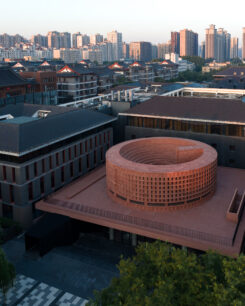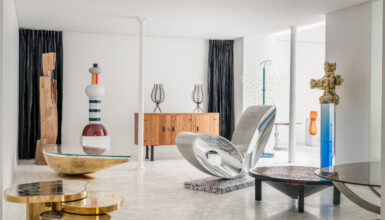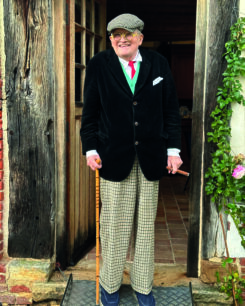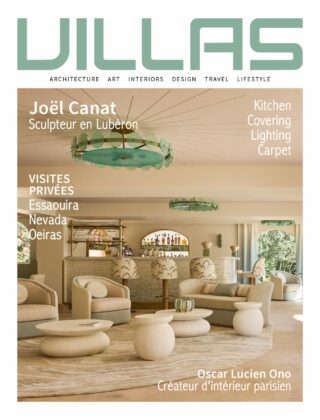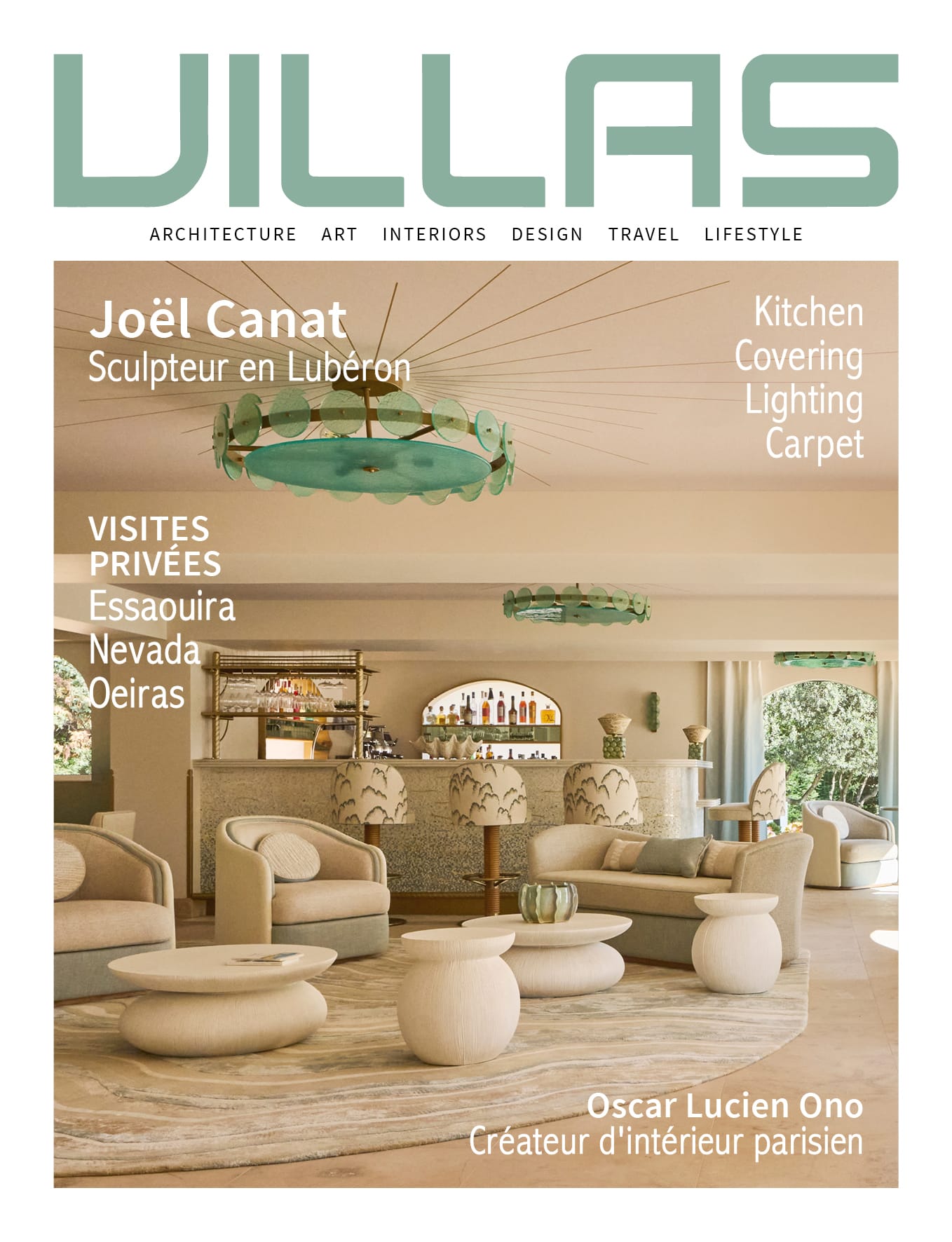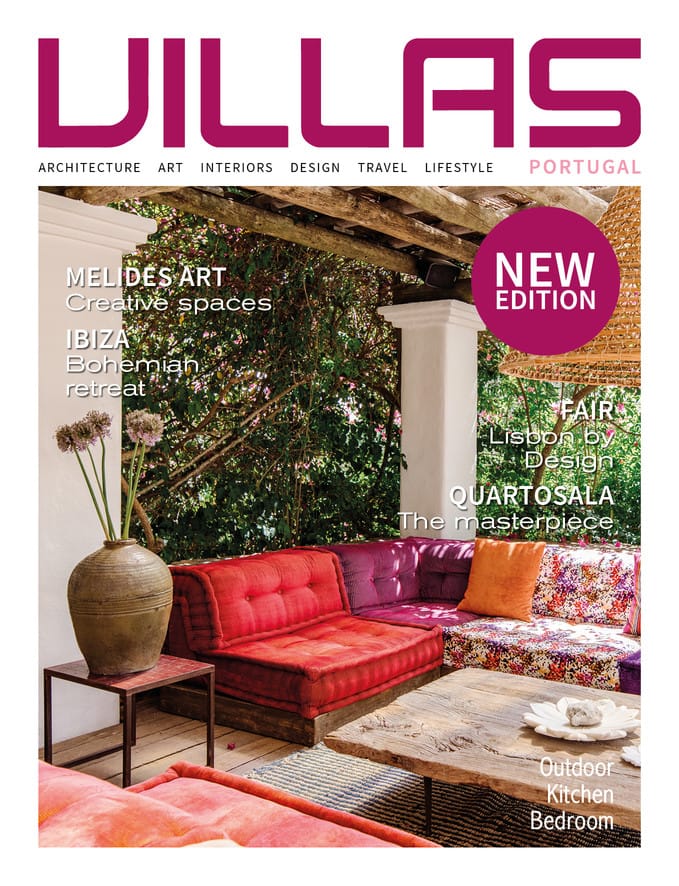Sommaire
Their contemporary vision manages to combine the decorative arts and collectible design, achieves an alchemy between the intelligence of the hand and the generosity of the material, bringing together in harmony traditional processes and a spirit of innovation. They are open to diversity and exchange, questioning the limits of techniques while respecting materials, and shaping the more sustainable design of today and tomorrow. Spurred on by international fairs such as Collectible Brussels, PAD Paris and London or Design Miami Basel, Downtown design Dubai or the Biennale Homo Faber Venice, furniture, objects and decorative elements are evolving and taking on an increasingly artistic and sculptural dimension. The proliferation of specialised galleries also highlights the technical performance of these pieces. Approached like works of art that are unique or produced in limited editions, they nonetheless offer genuine functions and open up new fields of exploration. In this highly inventive world, formerly known as the applied arts, we also come across a new generation of decorative painters working in the luxury sector. Emerging or established talents, they are blazing a trail, engaging in dialogue with the past and asserting their captivating originality with powerful proposals. Today’s creations, which reinvent the art of craftsmanship and draw on the wealth of noble materials, offer the hallmarks of fine workmanship of the highest order.
The aristocrat of alabaster
Alain Ellouz
Incandescence, Alain Ellouz’s new lighting collection reconciles extremes. It celebrates the marriage of two noble materials: alabaster, for which his work is renowned, and burnt wood. Using alabaster and rock crystal sourced from Madagascar, this goldsmith of stone becomes a scenographer of light. In his studio, he brings out the full vibrancy of these materials, crafted into pure, unique and poetic forms. The organic volumes he sculpts evoke the swirling fluidity of molten lava and the elemental power that animates the bowels of the Earth. Beech wood, with its dark veins and deep scars left behind by the passage of a devastating fire, offers a sensitive new scale-like texture. Its intense black colour effectively contrasts with the translucent softness of the alabaster. Alain Ellouz entrusted Ateliers Danneels and Zafiro with the execution of the parts worked in burnt wood. This technique is known as yakigusi, a process of Japanese origin. Hugo Danneels and Julie Figuero Zafiro have chosen to focus on regenerative design, working in particular with pollard, a form of tree that preserves ecosystems. The encounter between wood and fire, its cracks, the charcoal effect, the transformation of matter by fire and the desire to stop this metamorphosis in its tracks are all part of their playground and magical universe. As for the light, filtered through the alabaster, it reveals its chiaroscuro, creating a bewitching and mysterious atmosphere. No one can fail to be captivated by the hypnotic spectacle of this telluric power that speaks to our senses. (atelier-alain-ellouz.fr)
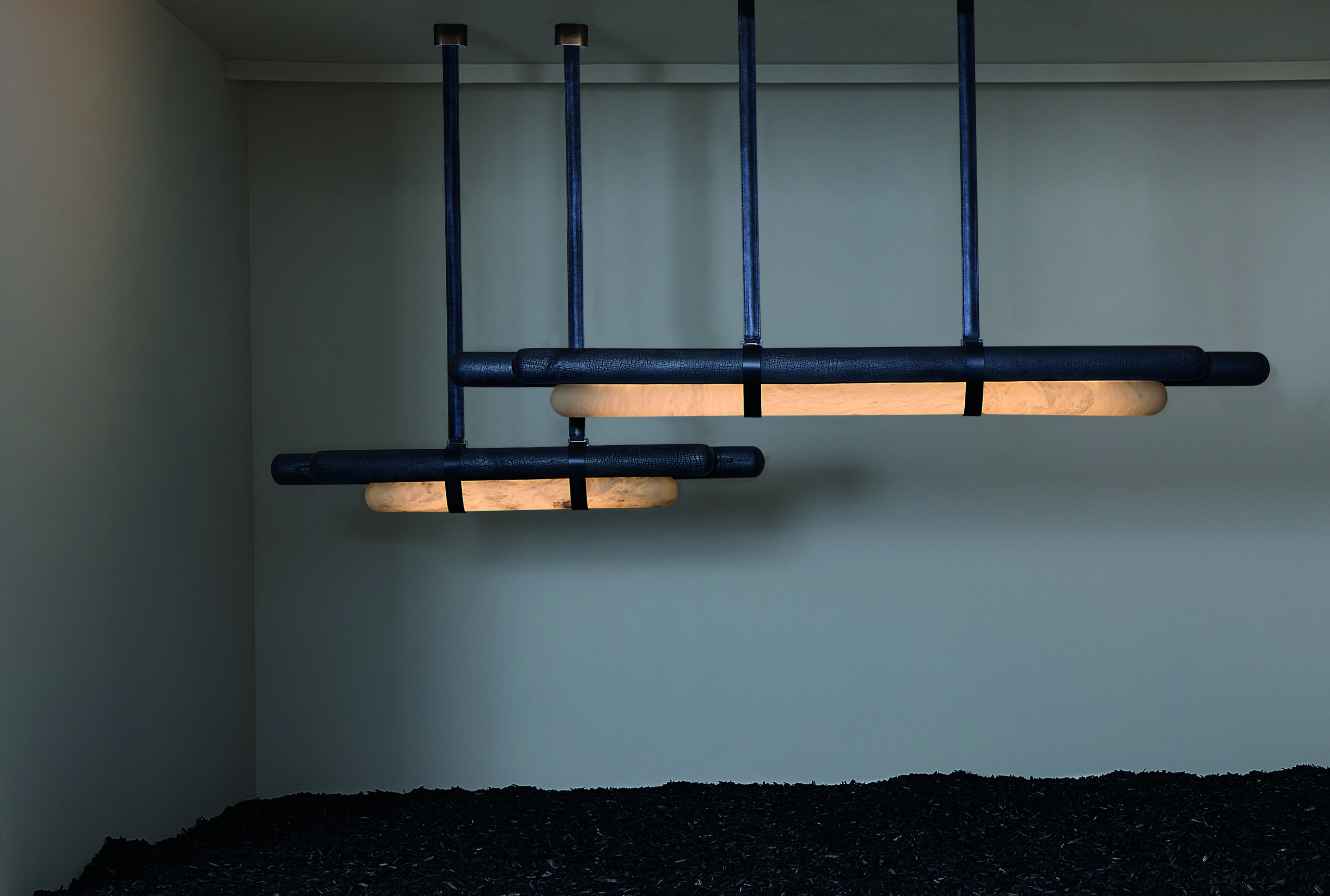
Alain Ellouz
The king of cabinetmaking
Jean-Luc Le Mounier
Designer, artist, craftsman of excellence, awarded the prestigious French title of “Compagnon du Devoir”, or journeyman craftsman, since 2010, Jean-Luc Le Mounier devotes his efforts to his own creations, which are hailed as masterpieces. Represented by Maison Gerard in New York, he treads the thin line between art and design. Each of his pieces is made in his workshop in Dinard, Brittany, where he explores new forms of cabinetmaking. Featuring veneers of rare species or inlays of precious materials, his bold, spectacular pieces, inspired by art, architecture, fashion and, above all, nature, create a sensation by constantly breaking new ground. Papillon is a case in point, a cabinet suspended like a jewel against the wall, covered with black and gold straw marquetry, a creation that bears his unmistakable signature and that was showcased in a tower block in Miami, designed by Zaha Hadid. The façade of his Origami cabinet in engraved and inlaid sycamore, bronze and black sand, reinterpreting the raw, mineral aspect of concrete, was inspired by a New York concrete building. Jean-Luc Le Mounier devotes extreme attention to detail in the construction and design of his unique pieces, and employs techniques reserved for jewellery-making. This was the case when he created the Hamada cabinet, in collaboration with a master enameller from Limoges. The granite enamel texture that forms the façade’s decoration is achieved through a lengthy firing process in which black crystal is bonded to copper leaf. The piece is then entirely covered by a fine layer of platinum for extraordinary brilliance (lemounier.fr).
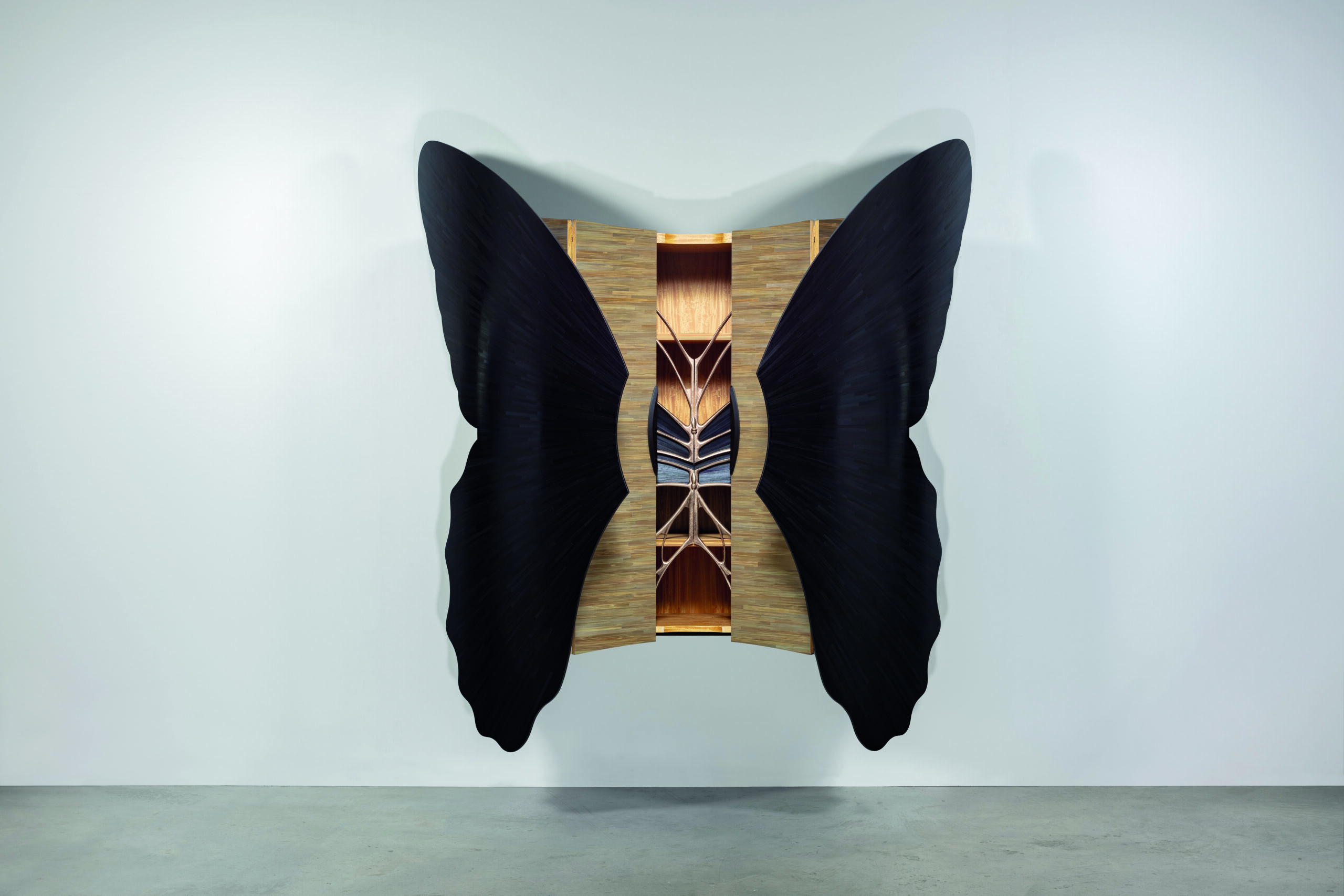
Jean-Luc Le Mounier
The tzar of timber
Reda Amalou
He has the soul of a builder. With a diverse background as an architect, interior designer and designer, before designing furniture and objects, Reda Amalou was more accustomed to planning and fitting out hotels. This change of scale prompted him to set up his own design studio in 2013. An elegant blend of purity and emotion, distinguished by the sensuality of its soft curves, the Soa console features a long line of high-gloss lacquer running through the essence of American walnut. Walnut is a wood variety the designer is particularly fond of. The wood he used for the Panama screen comes from an underwater forest submerged by the waters of Lake Gatùn, one of the world’s largest artificial lakes, created during the construction of the Panama Canal. Like all his creations, this piece tells a story, tales drawn from his childhood in Algeria, his years studying in London and his travels in Africa. His style, freely inspired by the 1920s-30s, conveys a minimalist spirit, straddling two worlds, one of tradition, the other of modernity, composed of pieces with balanced proportions. He demonstrates that simplicity can be complex, and that it can go hand in hand with subtle refinement. The materials he chooses are rich and natural: in addition to wood and lacquer, crafted by artisans in Asia, he experiments with leather, glass, straw and ebony marquetry in a quest to break out of his comfort zone. His main collection comes in one-off pieces or limited editions of eight. Some pieces, included in the Gallery Collection, are entirely handcrafted by artisans (redaamalou.com).
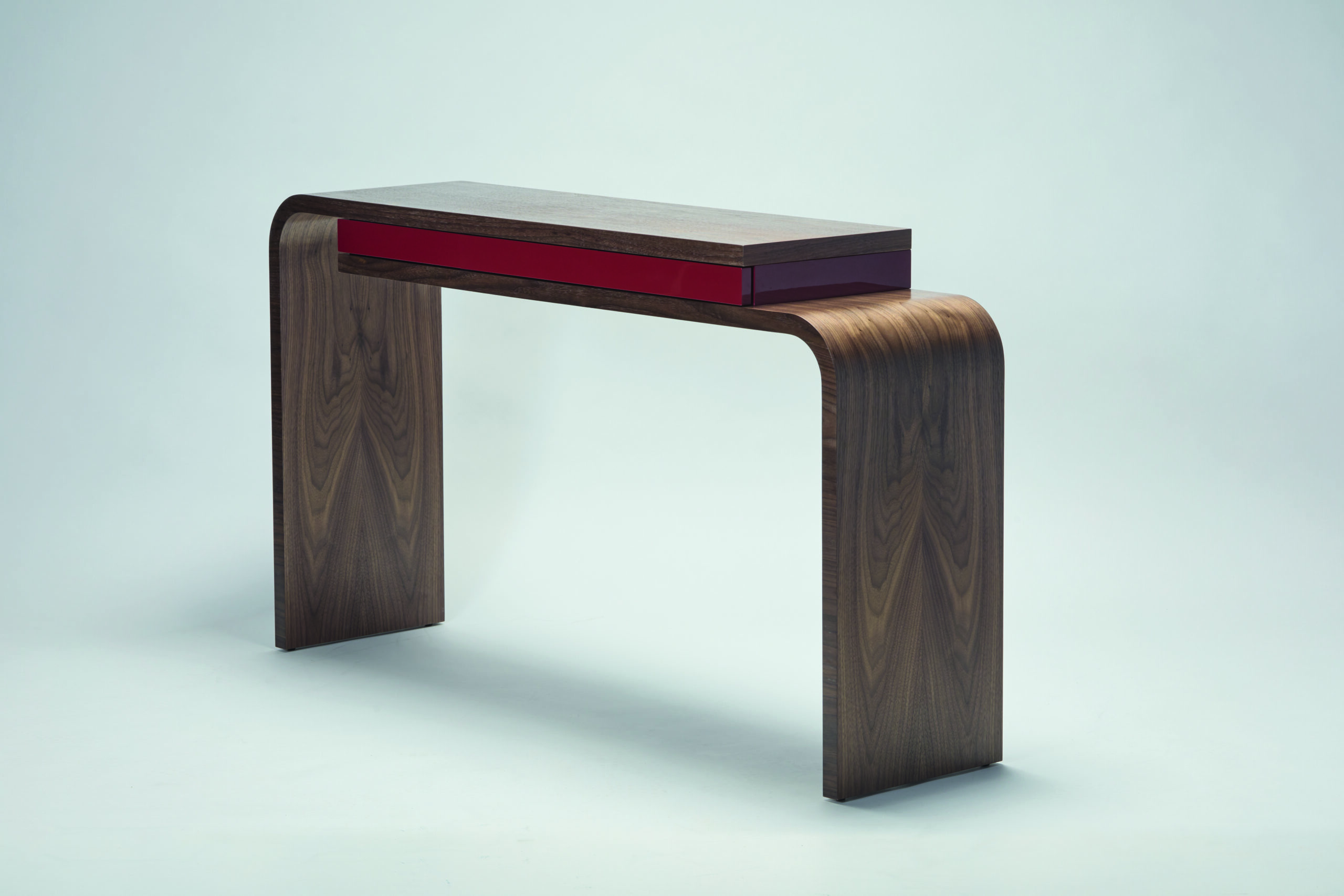
Reda Amalou
The maharajah of metal
De Castelli
Founded in 2003 by Albino Celato and heir to a long tradition in the field of metal fabrication, De Castelli crafts furniture born of collaboration with famous designers who are curious to come up with new surface solutions. The outcome of unstinting study and research into materials, these textures put the spotlight on the characteristics of the basic materials. A modern interpretation of a Victorian chair, made entirely of polished brass, the Walt Chair combines thick polished surfaces with a brushed finish on the seat and back, creating an evocative play of variations in hue and reflection. Presented in Venice during Homo Faber 2024, a biennial showcasing the best of international contemporary craftsmanship, this chair transforms a functional object into an object of connection and inclusion. Sculptural and visionary, it manages to get across the expressive language of designer Giampiero Bodino, combined with the technical know-how and innovative expertise of De Castelli. The Twist collection, designed by Zanellatto and Bortotto, offers a fine illustration of how the two-dimensional metal surface becomes three-dimensional: the work of folding, hammering, bending and welding generates luminaires inspired by complex, conical shapes. Three volumes are assigned to three types of lamp, suggesting different interpretations of metal (hammered brass, hammered copper and stainless steel). The finishes and processes used are mixed and matched to play with alternating brushed and oxidized surfaces, reflecting light in unexpected ways (decastelli.com).
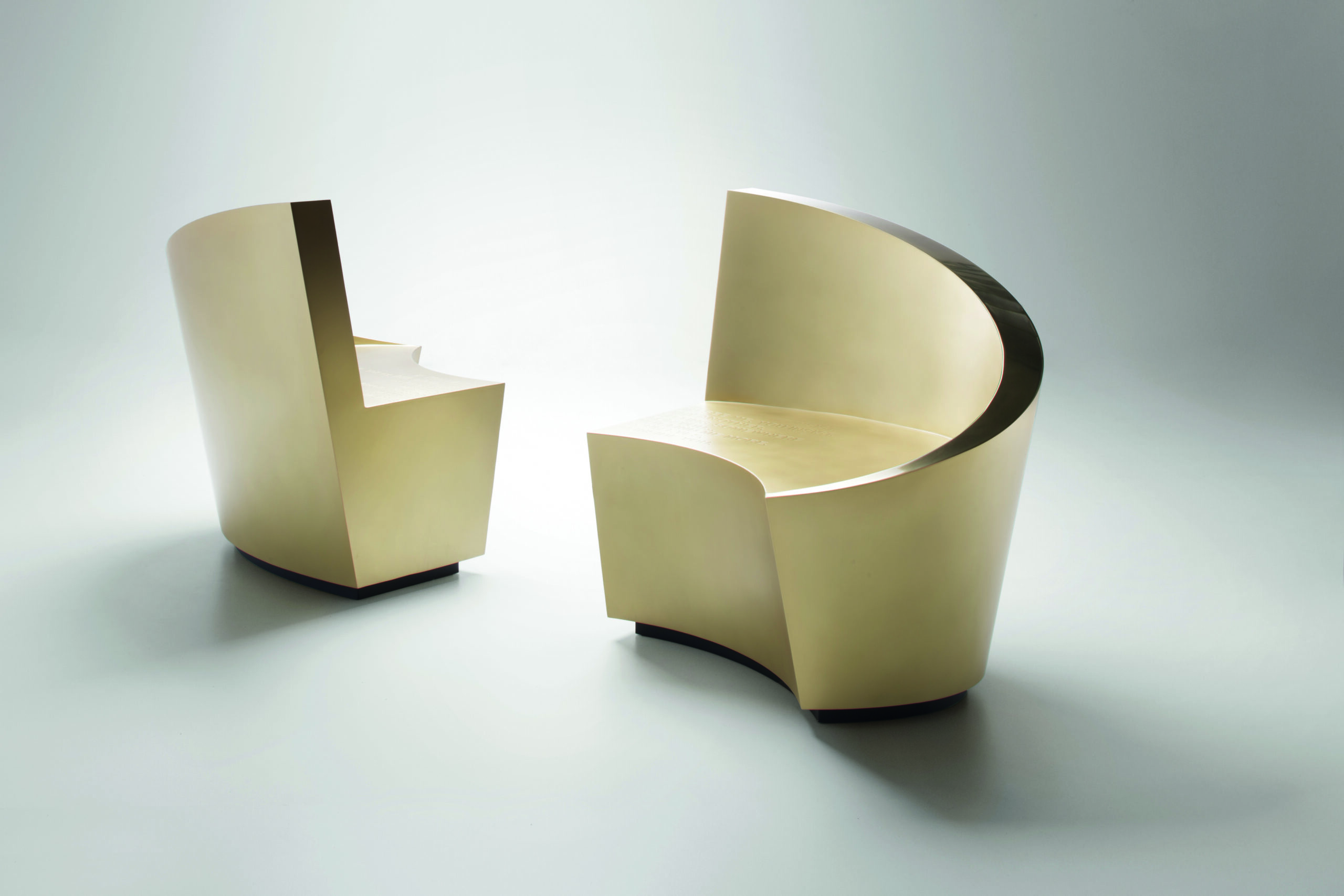
Alberto Parise
The pashas of porcelain
Coup de foudre
In their home-workshop-gallery in Kortrijk, Goedel Vermandere and Jan Arickx fashion luminaires from immaculate porcelain. Lonne Deliens, an architect by training, who happens to be Goedel’s daughter, joined them two years ago, injecting a fresh, innovative take into their 25 years’ experience. Their creations, brought together under the Coup de foudre label, draw generously on their respective skills. Each piece is shaped entirely by hand, without resorting to the use of moulds. Porcelain, which deforms and shrinks during firing, makes the process as stimulating as it is delicate. Layer after layer, subtle textures, varied thicknesses and fascinating nuances run through the delicate porcelain, accentuating its depth and the complexity of the form, constantly evolving as it enters into the play of light. The organically aesthetic Silence, exhibited at Homo Faber 2024, is a far-reaching quest for structure and transparency. The various exclusive models are the result of lengthy research and combine the techniques of different skilled craftspeople: sculptor, florist, jeweller, ceramist and others beside. Some pieces, like the chandeliers composed of petals, are made up of over a thousand parts and elements. The work is instinctive, with little or no preliminary drawings, and highlights porcelain’s spirit of contradiction. Hard, difficult to pierce, yet extremely fragile, impenetrable, but also brittle, perfectly blocking the passage of electricity, yet generously allowing light to filter through, it is a marriage of elegance and sophistication, of modesty and frivolity (coup-de-foudre.be).
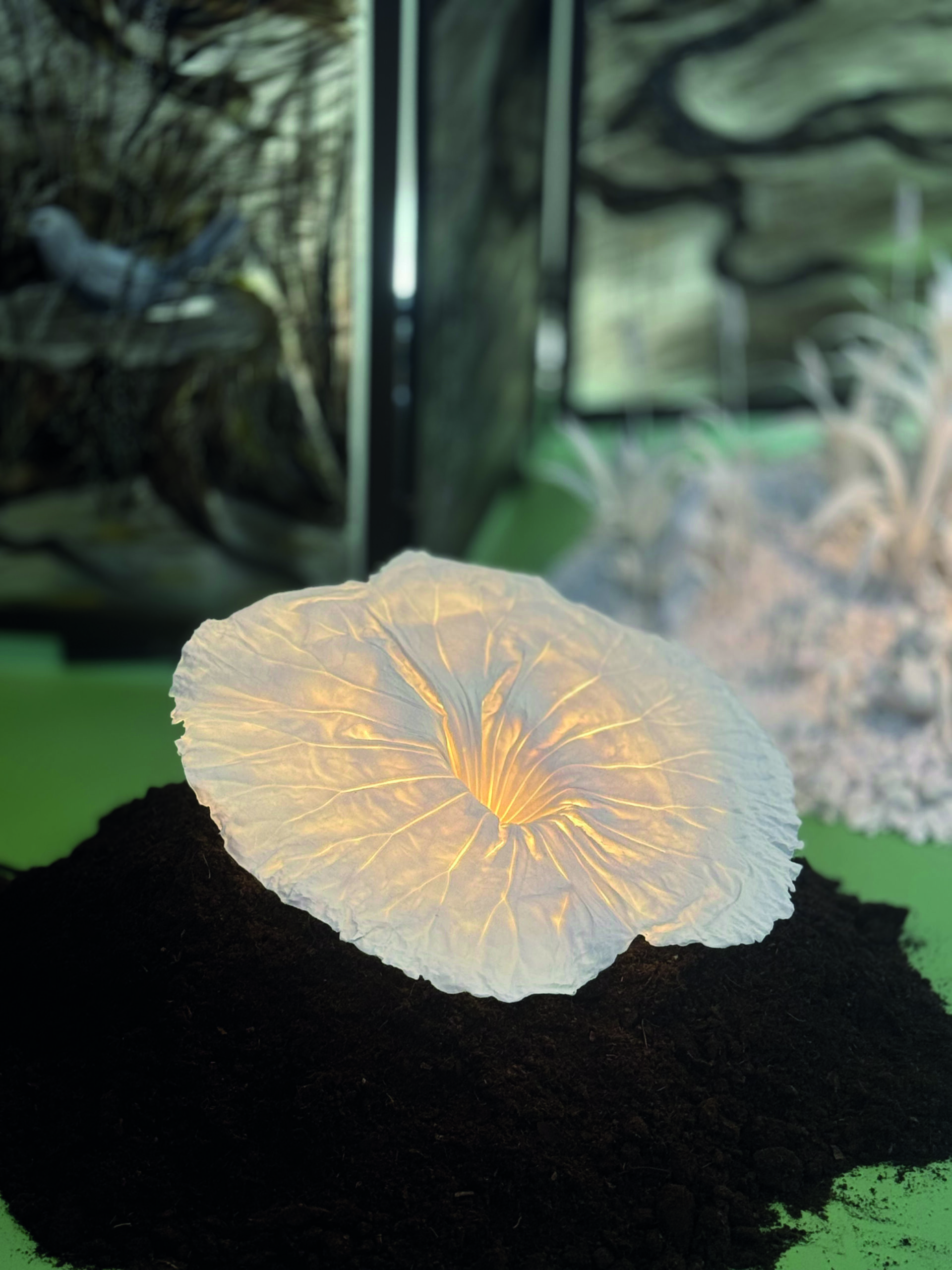
Coup de foudre
The baroness of bronze
Maison Intègre
In Ouagadougou, Ambre Jarno has set up Maison Intègre, a workshop that houses under one roof the whole gamut of bronze-related skills. After having lived for 12 years in Africa, where she discovered the art of lost-wax casting, she gave up her job in France to return to Burkina Faso. To bring her project to fruition, she called on designers such as Noé Duchaufour-Lawrance. The Rétro lamp and Kassena side tables shown here at various stages of completion are part of her Made in situ work. The manufacture of bronze, a highly capricious material, is split into several trades: casting, welding and finishing. Ambre Jarno buys her raw material by the kilo, whether re-used metals, old taps, defective machined parts, gas canister knobs or even army bullets, which are then melted down. The piece is first sculpted in beeswax, which is collected in northern Burkina Faso. In a second step, a mould is fashioned out of clay and donkey dung. If the piece produced is a success, the sense of victory makes you forget the fails that are part of the process… The imperfections are an integral part of the beauty of the shapes. The assembly work is colossal, as in the case of the Kassena table, composed of five fragments. Sanding reveals the shiny, vibrant aspect of the gilded brass. The African master bronzemakers supervise a team of some fifteen people, supported by bronzemakers from the south of France, who work on the finishing touches. While steering these magnificent craftsmen towards excellence, Maison Intègre also produces smaller, more accessible pieces, such as coat hooks, door handles and small lamps(maisonintegre.com).
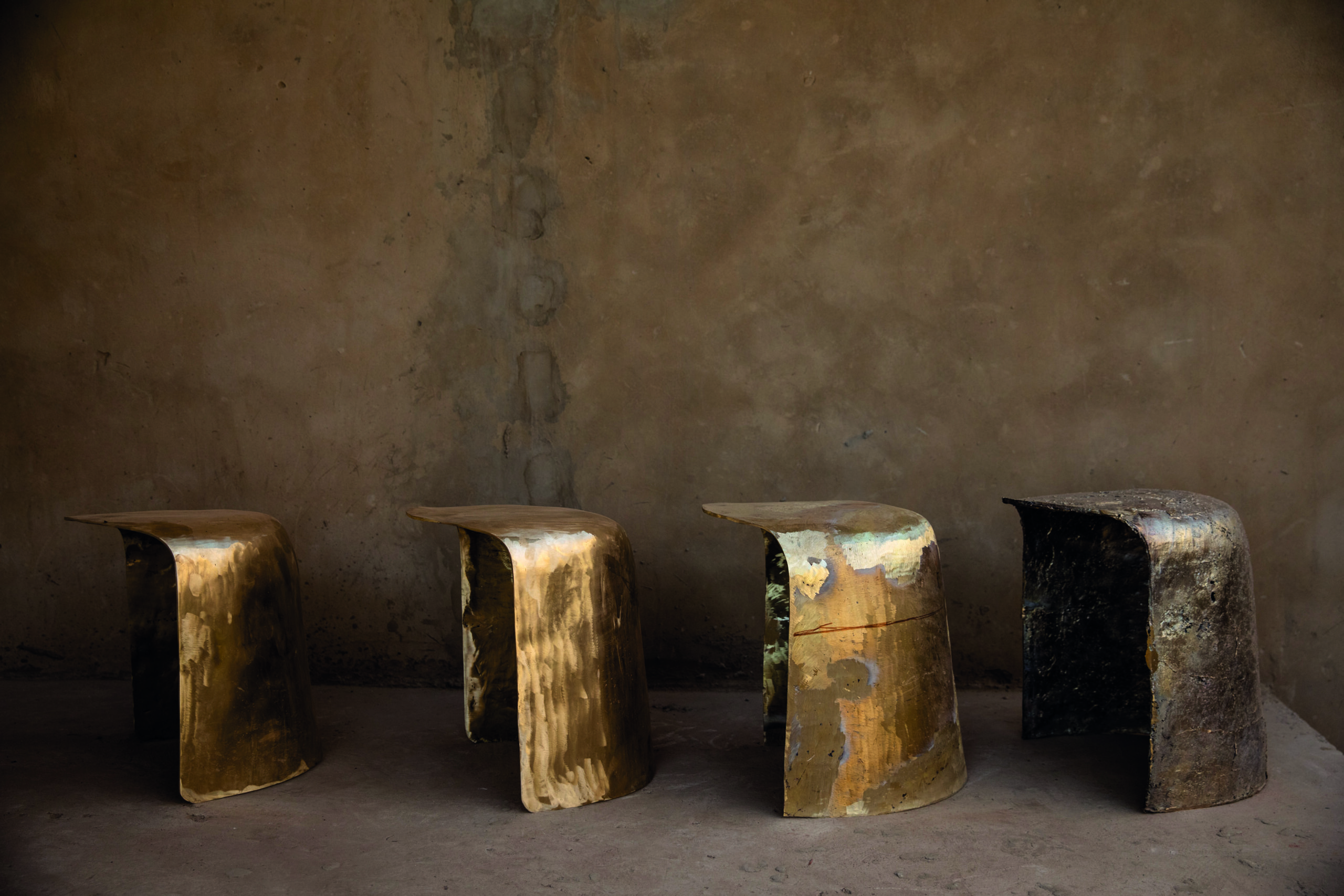
Maison Intègre
The lord of lacquer
Franck Genser
Franck Genser studied in Nancy and attended the Ecole Nationale de Géologie. An engineer with a passion for phenomenology, his skills cross boundaries and disciplines. Intrigued by the creative process, Franck Genser is an iconoclastic designer. He began creating highly original objects on the basis of lacquer and was intent on endowing his pieces with a strong artistic personality. In 2015, with the collaboration of highly specialised craftsmen, he opened his workshop to make objects that would immediately become collectors’ pieces, with a heritage quality. Creations that are kept, passed on, like grandmothers’ cabinets of yesteryear… His interest in ancient techniques is driven by the idea of applying them to organic, contemporary and timeless forms. The Shogun table and bench, born of the encounter between his refined style and Japanese aesthetics, come across as calligraphic signs in the space. The beech top of the Chumta desk is finished in sfumato mirror lacquer, a painting technique invented by Leonardo da Vinci. It enlivens the object with different reflections, more or less brilliant, with numerous matte nuances. As for the Onishi coffee table, covered in Urushi Japanese vegetable lacquer, it pays homage to the Japanese masters of this ancestral art. Obtained by evaporating and filtering the sap collected from the lacquer tree, it is coloured with pigments and becomes glossy as it dries. Several months of work, successive coats and drying times are required to wrap the shape in this fascinating emotion of surface perfection (franckgenser.fr).
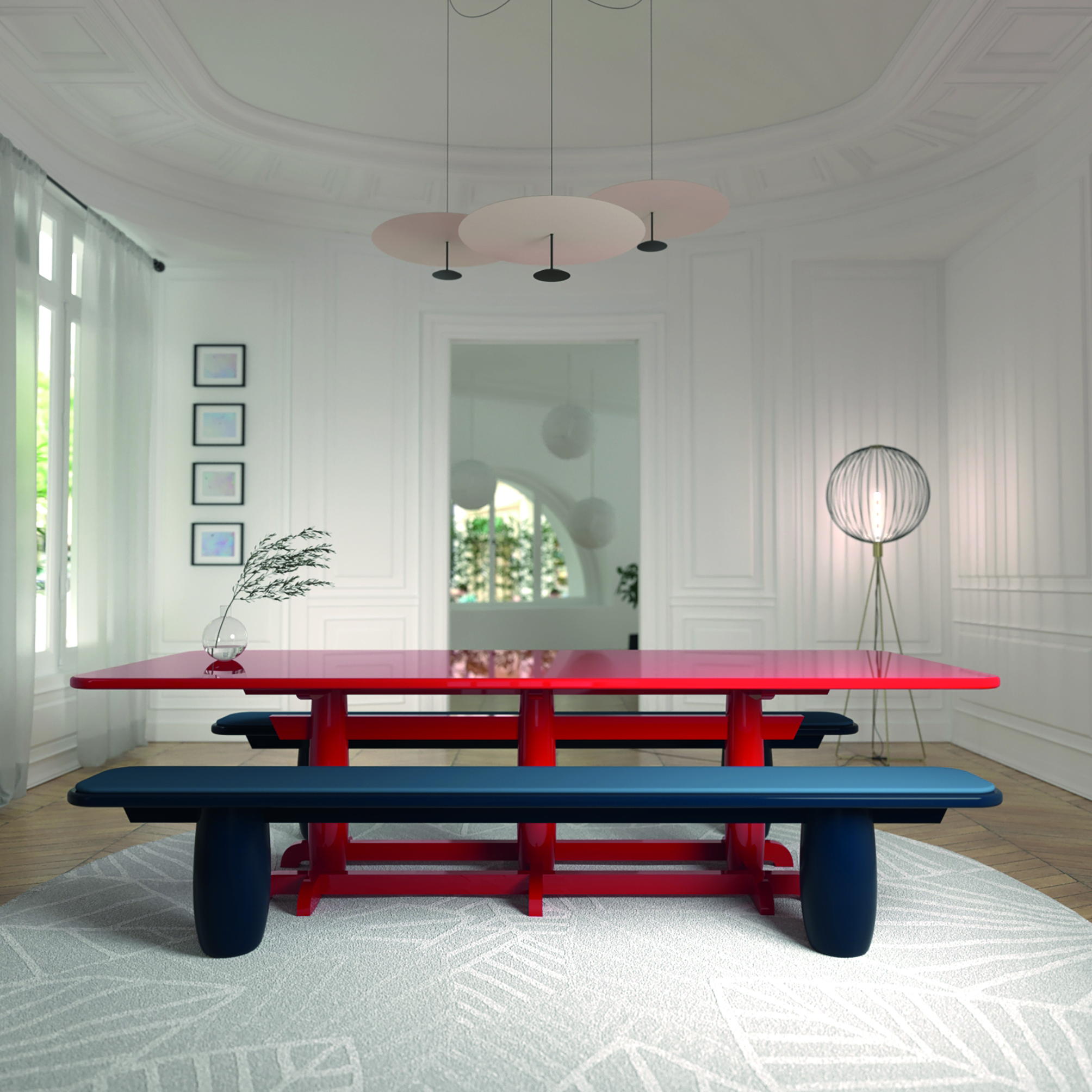
Franck Genser
The emperor of eclecticism
Ado Chale
A complete artist, driven by a passion for nature and materials, he was the forerunner of a new generation of designers that emerged some 20 years ago. With his independent spirit and a body of experience picked up along the way without any formal training, he followed his intuition and avoided coming under the pressure of external influences. A craftsman, creator and antique hunter, during his extensive travels he collected and hoarded a bounty of materials for many years. When he came across resin, he stumbled across an elegant material that blends with mineral beauty. His work on tables with tripod legs remains emblematic. The round and square lines of the tabletops have since evolved into more organic shapes. Since 2007, the workshop has been housed in the stables of the Hôtel Solvay house museum, and retains a family-run, artisanal structure. All new models are the result of drawings and projects imagined in the 1960s/70s that had not yet been realised, such as the “Joséphine” model in memory of his mother, which was produced in a limited edition of 50 pieces. All models are made to order, according to a range of predefined sizes and dimensions. A precise description and certificate of authenticity are produced for each object. Foundry and polishing work are entrusted to external workshops. The workshop is also responsible for any renovations and authentication of older works presented at auction. For some years now, Ado’s children, Pierre and Ilona Chale, have been perpetuating their father’s work, with due respect for his techniques and style (adochale.com).
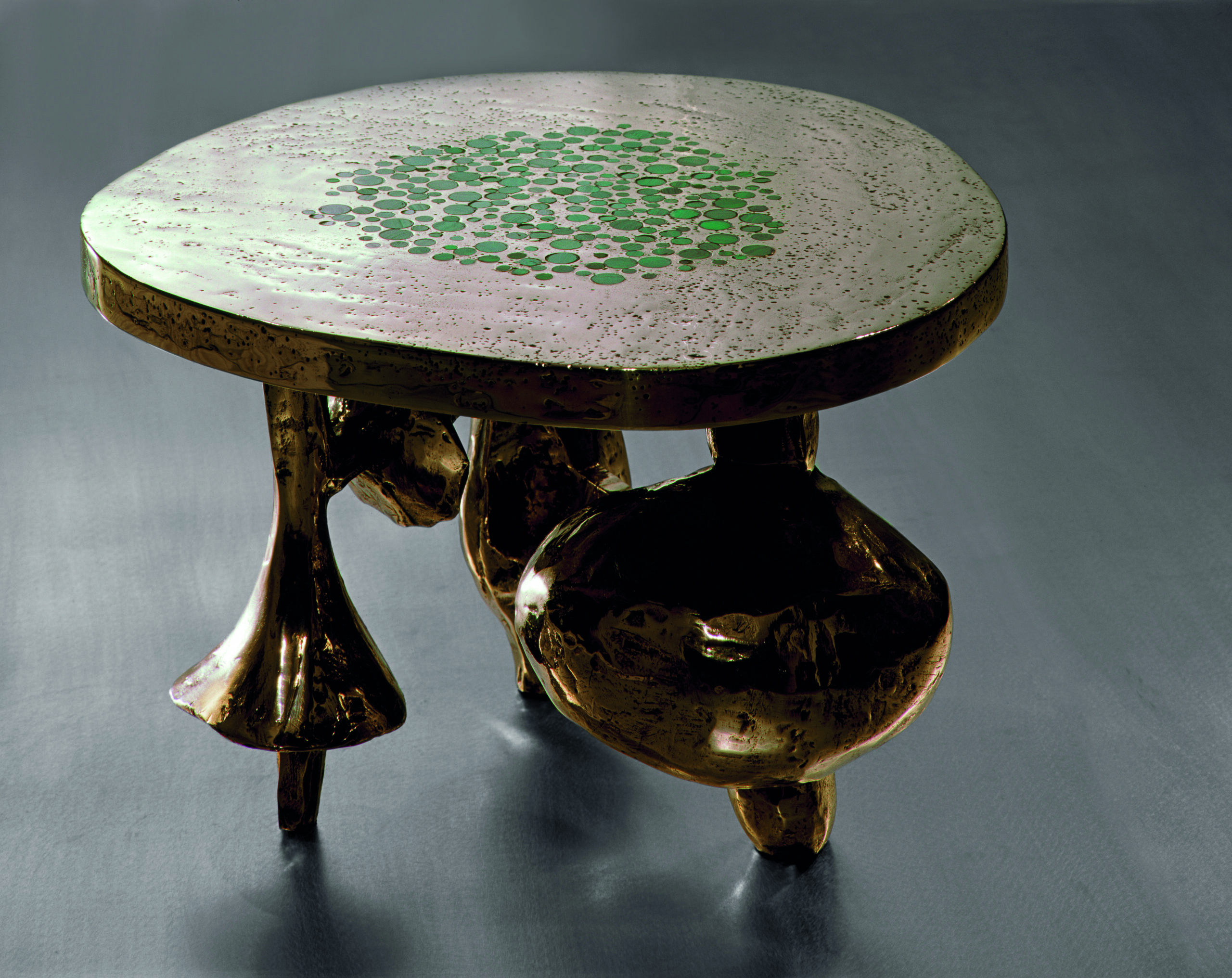
The rulers of resin
Draga & Aurel
Based on the shores of Lake Como, Draga Obradovic and Aurel K. Basedow have positioned themselves as a laboratory for art and design. Using mixed techniques, with a sculptural approach to materials and their composition, they have made a name for themselves through their visionary work using epoxy resin and Plexiglas. This year, Milan’s Rossana Orlandi gallery dedicated a space to their creations, alongside Nilufar, another gallery that has been exhibiting their three-dimensional artworks for the past two years. Reminiscent of the 1970s, the Lewit headboard, made from resin and concrete with metal details, imposes its geometric forms. The lighting fixtures refer to the minimalist artists of the same period. The Ray suspensions, luminous rods in epoxy resin, cast in three stages, create unexpected and variable visual effects, depending on the point of view observed. The final polish allows the light to filter more precisely. The Baia console and table, as translucent as fresh water trickling over rocks, come across as pure volumes. The secret of the material’s depth lies in the juxtaposition of raw cement with thick, tinted resin. Optical games, unexpected visual effects of smoke, pastel and milky colours blending to create reflections, transform the shapes of the Glaze table stool or the Glint cabinet. For the Nilufar gallery, the designers created the exclusive Tinted Hues project as a means of exploring the power of materials, where epoxy resin is enriched by opaline insertions. Marvels all of their own that are a sheer pleasure to behold… (draga-aurel.com).
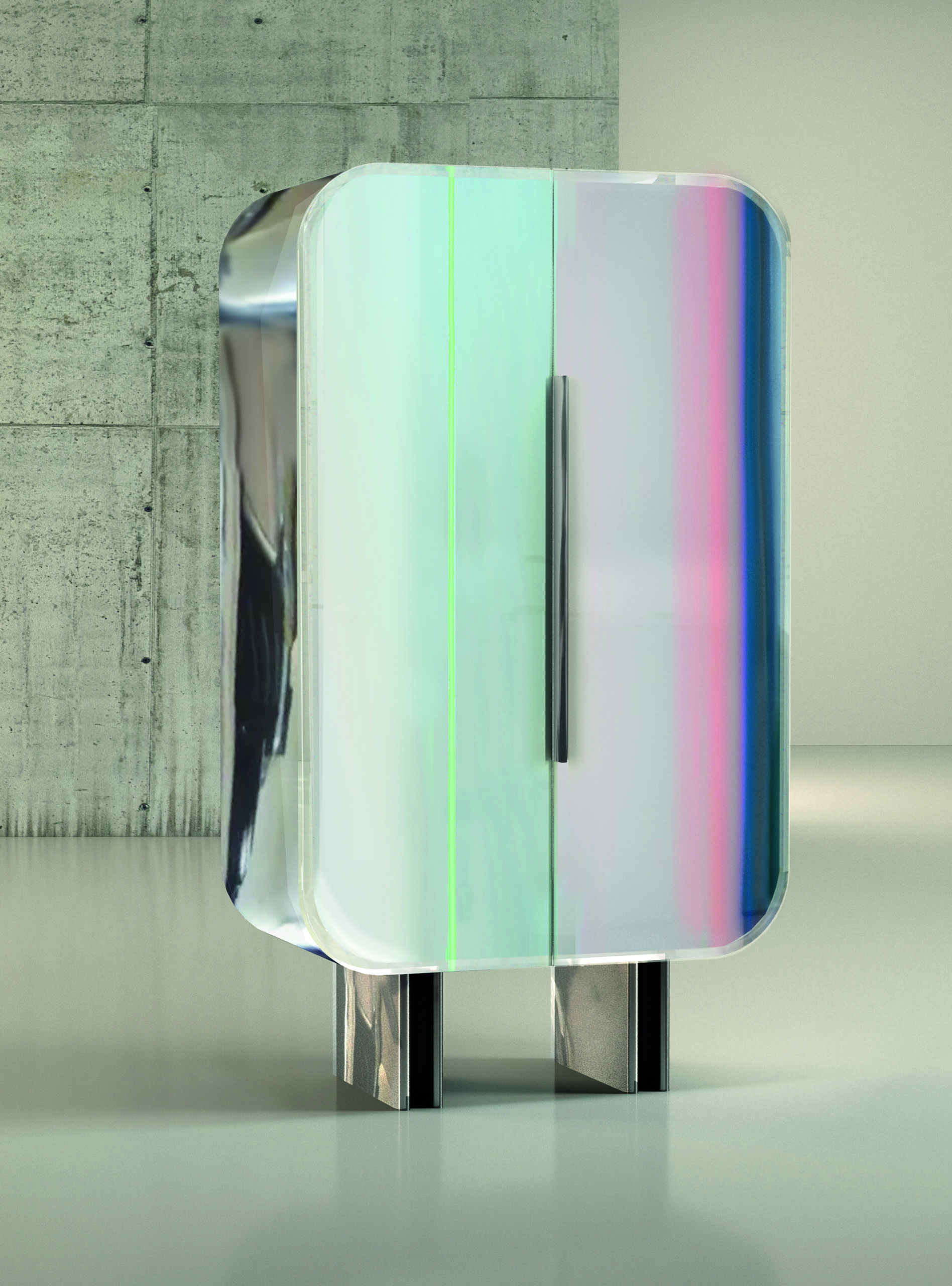
Federica Lissoni et Rossana Orlandi Gallery
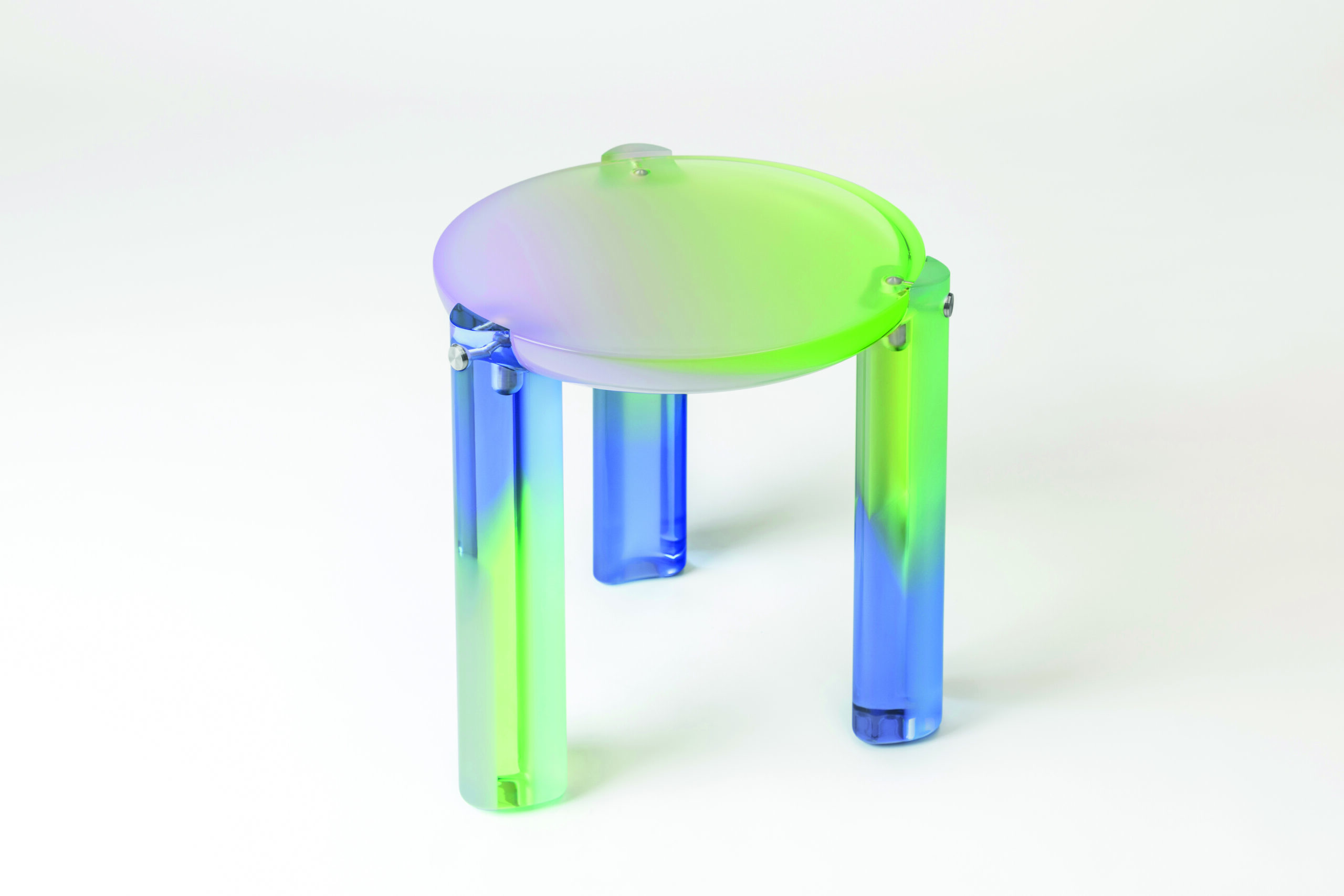
Federica Lissoni et Rossana Orlandi Gallery
The moguls of mural art
Atelier Bundell & Therrien
After training in a range of different painting techniques, in 2013, Célina Bundell and Christophe Therrien, decided to create their own studio. Their spectacular decors revisit the classic codes of mural painting, approaching it in an inventive and contemporary spirit. Surrounded by an exceptional team of gifted craftsmen, they breathe new life into ancestral practices. Their figurative or abstract decors, reflecting a true graphic revival, are created with natural and mineral pigments, offering the deepest and most subtle colours. Even in this digital age, each study is painstakingly carried out in pencil or watercolour. The final project is painted on the support itself or on large canvases that are then mounted onto the walls or ceilings. It is worth noting that they have mastered the art of gilding with distemper, a process of smoothing the surface to be painted that calls for a great deal of patience, where the preparation of the support with rabbit skin glue and blanc de Meudon whiting requires great care. Other techniques include sgraffito, in which a thick layer of paint is peeled off to reveal the previous layers, and eglomise glass, in which a dry point is applied to gold leaf to produce a design under the glass. For the refitting of the Cartier boutique in Brussels, they created a bas-relief in papier-mâché, an ancient technique used by Gaudi, featuring a panther in a setting reminiscent of the Royal Greenhouses at Laeken. This eco-responsible material, made from modelling plaster and vegetable fibre, is also known as “Plaster of Paris” (atelierblundell.com).
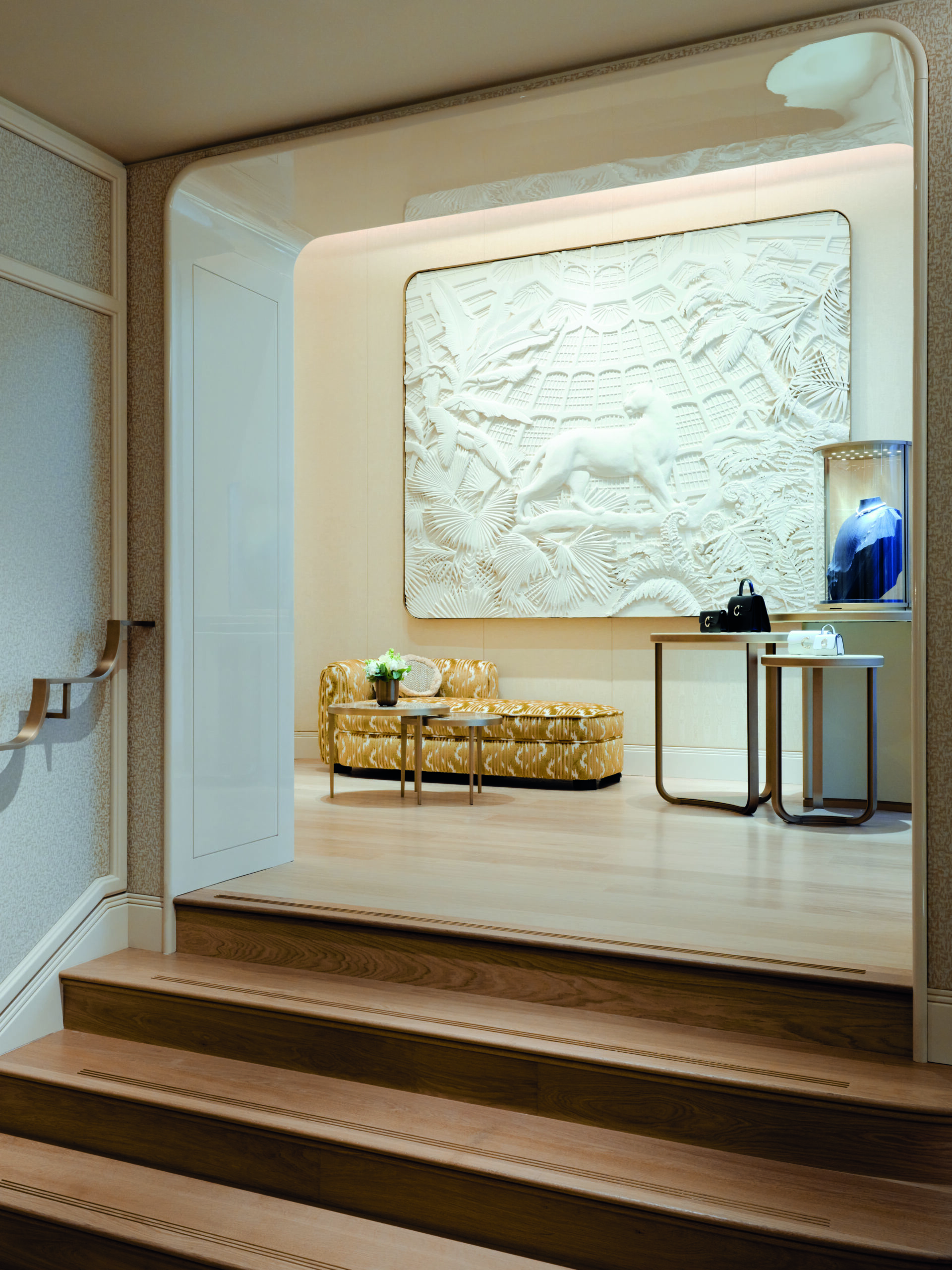
Cartier
The sultans of stone
Cromarbo
In their 3,000 m2 warehouse, Bruno and Isabelle Crooneenberghs house the world’s most beautiful ornamental stones. Marble, granite, quartzite and onyx reveal their infinite variety of colours and unique patterns, at the ready to adorn our homes with their natural beauty. For three generations, this family-run business has offered pre-cut stone in 2 or 3 cm thick panels, with a wide range of textures: Marble, a hard, compact limestone that is acid-sensitive, with random veining; unalterable magmatic granite, insensitive to acids, but with less spectacular patterns; translucent onyx that can be backlit, with its layered patterns, a ribboned or cloudy appearance; quartzite which is similar to granite, but with a range of decorations and colours that can be sublimated by lighting… Stones only reveal their hidden, intrinsic beauty after human intervention and the polishing stage, which creates a shiny, virtually impermeable material and releases their soft and dense, vivid or nuanced hues. In this open-book “stone library”, you will discover the blue-brown harmonies of Santorini quartzite, the verdant accents of Forest green marble, which has the ability to create a gigantic aerial shot of a forest, or again those of the Forest Brown variety, which is an invitation to take a microscopic dive into the fibres of wood. Others will prefer to succumb to the whiteness of Italian Statuario. Also found in Turkey, Brazil, India and Iran, as a rule, these stones are sourced from Italy, a global hub that imports stones from all over the world in addition to its own production (cromarbo.be).
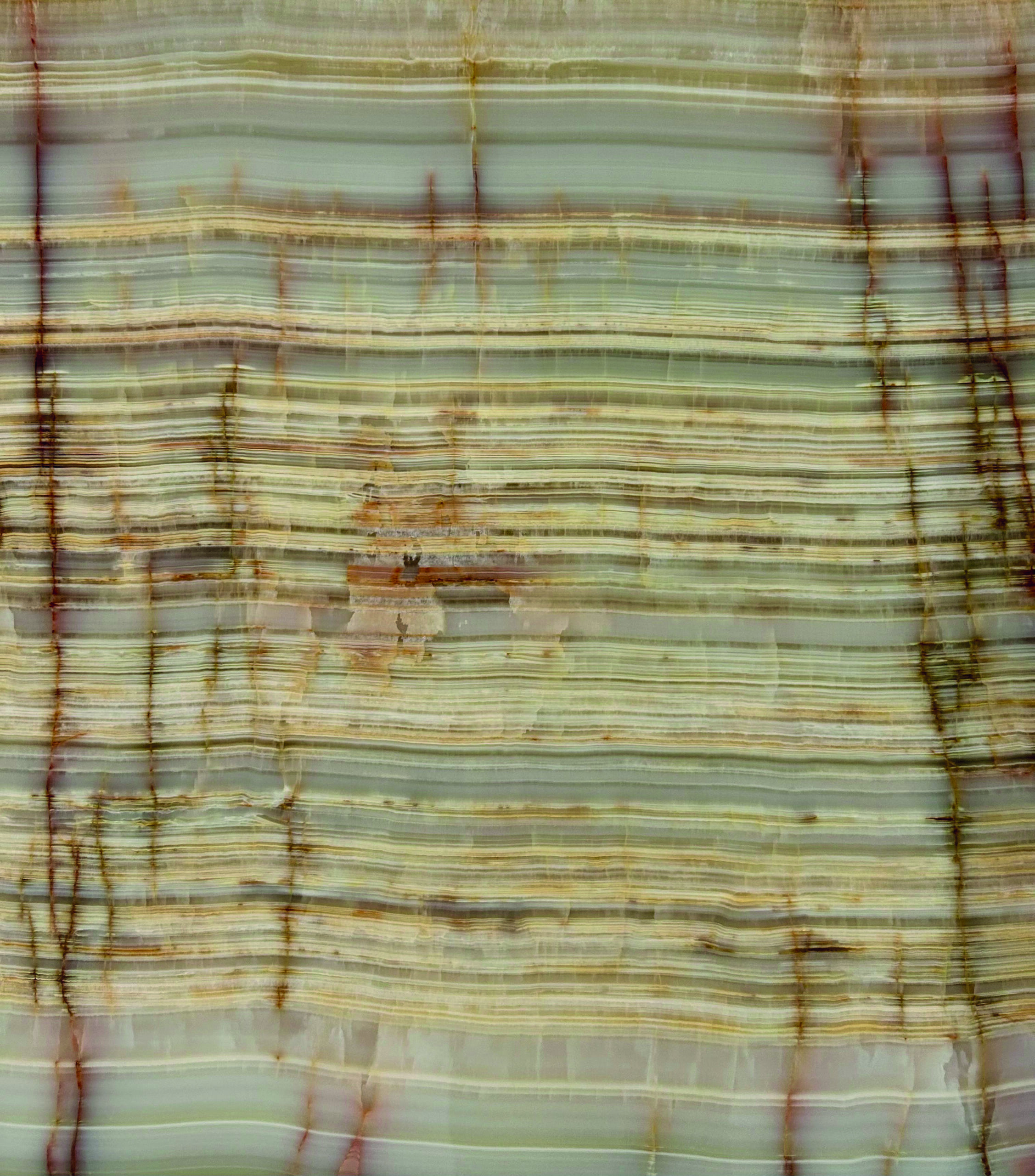
Cromarbo
The rajah of rugs
La Manufacture de Cogolin
This year, the company is celebrating 100 years of traditional craftsmanship and remains true to its birthplace in the Gulf of Saint-Tropez. Its creations are divided into two sources of inspirations, with some models drawn from the archives, while others are the result of collaborations with contemporary designers such as India Mahdavi and Stéphane Parmentier, not forgetting a historic partnership with decorator Christian Bérard. The creations are produced around four families of machines by weavers who undergo over five years of training to be autonomous on the most complex looms. Textured rugs or cantres are woven in 70 cm strips, while “flat woven” versions are produced in pieces from 50 cm to 3 m wide. All individual strips are assembled by hand. They are manufactured on 19th-century French “low-warp” looms with a Jacquard mechanism. This technique produces patterns, generated by perforated cards, partitions that guide the hooks, lift the threads to the rhythm of the perforations and enable the creation of highly elaborate designs. Weavers still cut threads by hand on the loom to create nuances of colour between cut and looped threads. Knotted rugs, which earned the Manufacture de Cogolin its reputation back in the 1920s, are now produced in Nepal on “high-warp” looms. The floral and geometric motifs, with their high relief, are available in a palette of 200 colours, all obtained from dyes developed by the workshop itself, with the greatest respect for environmental standards. Along the same lines, wool, cotton, linen, jute, silk and raffia are all natural materials (manufacturecogolin.com).
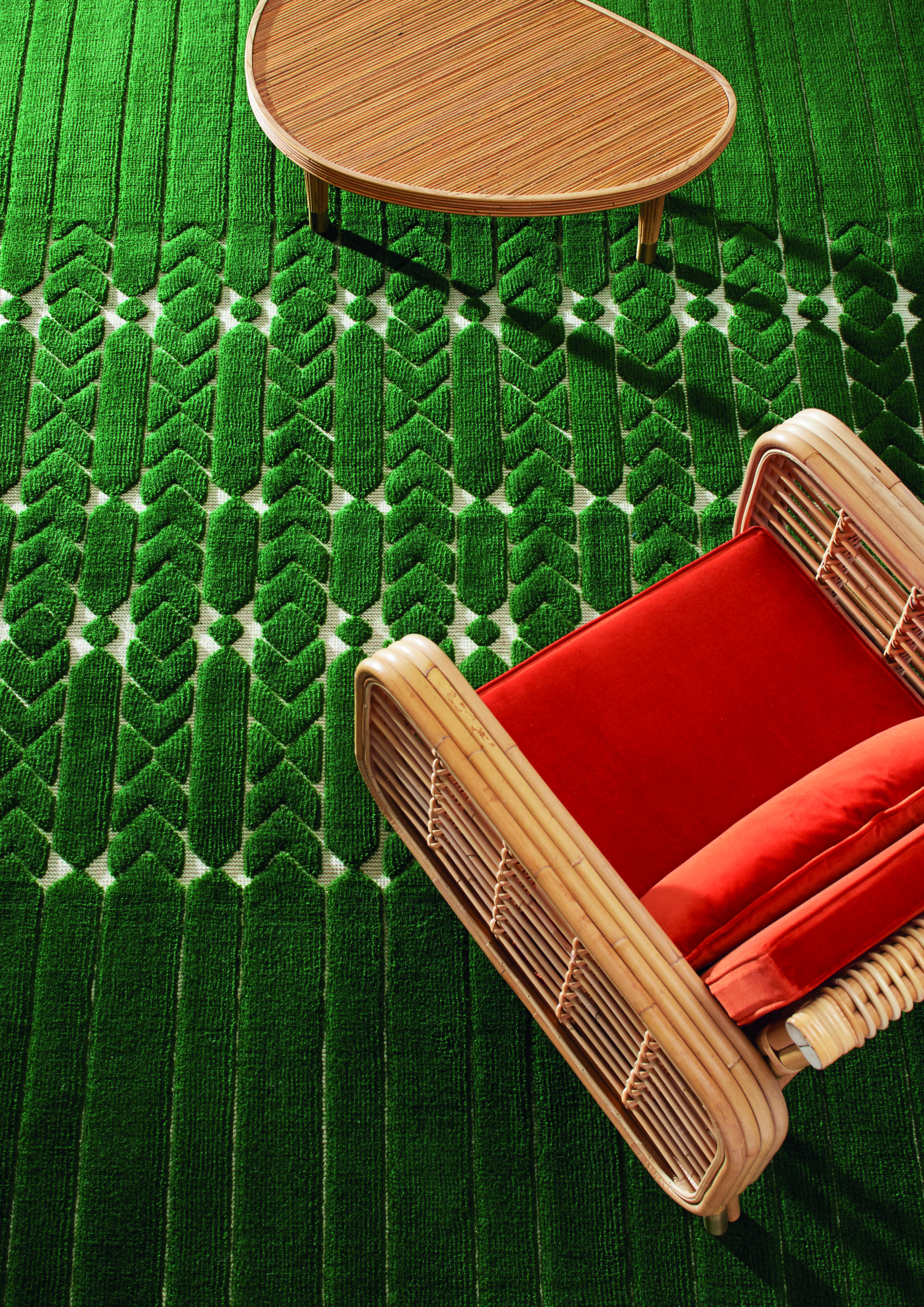
La Manufacture de Cogolin
The duke of 3D knitting
Gaspard Fleury-Dugy
During his studies, Gaspard Fleury-Dugy, a designer and visual artist, cottoned onto the exciting potential offered by 3D knitting, a virtuous industrial technique that generates no material loss during manufacture. As soon as he embarked on his professional career, he experimented with the idea of hijacking this knitting process, used to create apparel or more technical items with unique, supple and stretchable textures. He builds new bridges between the possibilities offered by the machine and time-honoured handwork, blending traditional know-how and neo-craft. He considers knits, with their floats and ribs, as a moving material. Everything starts with the thread, which is his line, while the machine becomes his pen. By changing yarns, he creates new appearances. His Soft Objects series grew out of the textile work of the knitting machine, seen as a production tool, capable of generating complex shapes in the manner of a 3D printer. By sampling knitted textiles, he composes a repertoire of patterns and colour combinations to create a collection of vases. The hijacked technique of the sock heel is used as a decorative element, structuring the concave and convex zones of certain pieces. Using stockinette, overlock or chain stitch, his creations, a cross between basketry structures and weaving patterns, combine the aesthetic forms of Ancient Rome with the curves of Oscar Niemeyer’s architecture. They also offer a more contemporary look, inherited from the pixelated rhythm of our screens, the colourful statements of sportswear or the Memphis design trend. (gaspardfleurydugy.com).
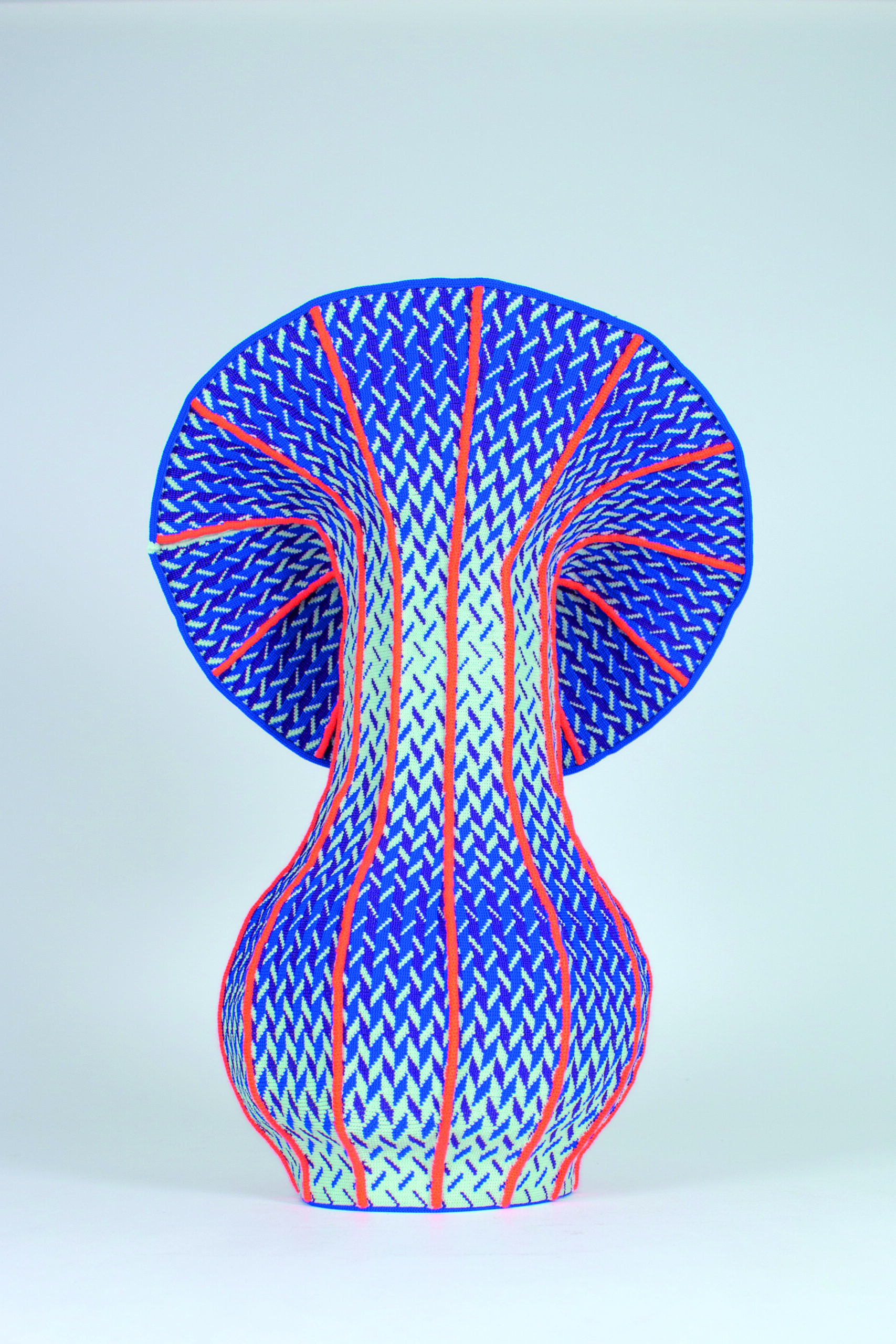
Gaspard Fleury-Dugy

